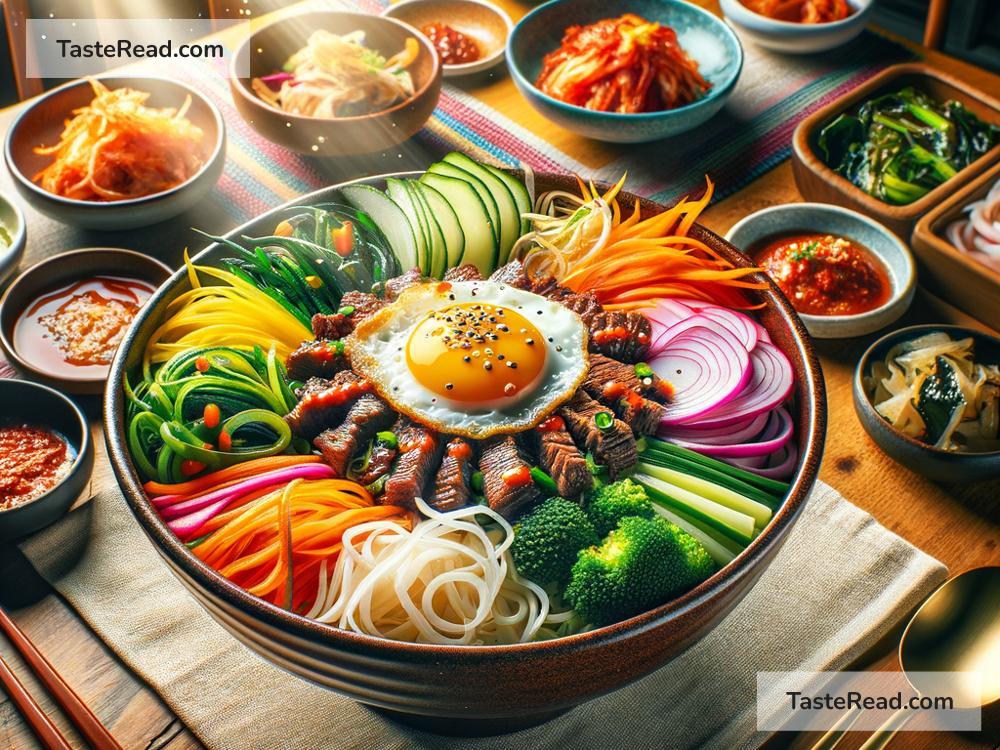Reveling in Authentic Bibimbap Mastery in Seoul, South Korea
South Korea is a country full of vibrant culture, exciting history, and delicious food. Among the array of traditional dishes, bibimbap stands out as one of the most famous and beloved meals. If you ever find yourself in Seoul, the capital city of South Korea, treating yourself to authentic bibimbap is an absolute must. This dish not only offers a tasty experience for your taste buds but also provides a glimpse into the heart of Korean cuisine.
What Is Bibimbap?
Bibimbap, which translates to “mixed rice,” is a hearty, colorful dish made with steamed rice, mixed vegetables, meat, and various toppings. The meal is often served in a large bowl with chili paste (gochujang) on the side. Sometimes, a raw or fried egg sits atop the dish, and some restaurants serve bibimbap in a hot stone bowl called “dolsot.” When mixed together, the ingredients create a symphony of flavors and textures that make this dish truly special.
Bibimbap is more than just food—it’s a cultural experience. It represents harmony, combining diverse ingredients into one perfectly balanced dish. The vegetables are often carefully chosen for their colors, which symbolize Korea’s traditional philosophy of harmony and balance.
Finding Bibimbap in Seoul
Seoul is the perfect place to explore bibimbap in its most authentic form. The city is full of restaurants that serve this famous dish, ranging from casual eateries to high-end establishments specializing in traditional Korean cuisine. No matter where you go, you’re bound to find some of the best bibimbap in Korea.
When searching for an authentic meal in Seoul, you might want to ask locals for their recommendations. While tourist areas like Myeongdong and Insadong have good options, local neighborhoods such as Hongdae and Jongno often feature hidden gems where the flavors are unforgettable. For a truly immersive experience, consider visiting a traditional Korean hanok restaurant—some of these places even use centuries-old recipes to prepare their bibimbap.
The Art of Mixing Bibimbap
Eating bibimbap is its own form of mastery, as Koreans believe in mixing the dish with care to enjoy the balance of flavors. Before diving in, take a moment to appreciate the visual beauty of the dish—the vibrant reds, greens, whites, and yellows are not just meant to look pretty. Each vegetable adds its own distinct taste and nutrition.
To eat bibimbap properly, add a spoonful of gochujang (if it’s not already provided) and mix everything together. Use your metal spoon, not chopsticks, to stir the rice, vegetables, and sauce thoroughly. In dolsot bibimbap, the hot stone bowl makes the rice crispy at the bottom, adding a delightful crunch to your meal. Bibimbap is believed to taste best when every ingredient is evenly mixed, so take your time creating the perfect bite.
Famous Bibimbap Variations
While classic bibimbap is already wonderful, there are many regional and creative versions you can try. Some famous variations include:
-
Jeonju Bibimbap: This type of bibimbap originates from Jeonju, a city known for its food culture. It’s considered the gold standard of bibimbap, featuring high-quality rice, fresh vegetables, and flavorful sesame oil.
-
Yukhoe Bibimbap: For adventurous eaters, yukhoe bibimbap includes raw beef (yukhoe) and is popular for its bold, fresh taste.
-
Seafood Bibimbap: In coastal areas of Korea and Seoul’s seafood-focused restaurants, you can find bibimbap topped with fresh seafood like shrimp, squid, or fish roe.
-
Vegetarian Bibimbap: This option caters to vegetarians and vegans, using marinated tofu or mushrooms in place of meat.
No matter which variation you choose, each one will offer a blend of Korean flavors and textures that will leave your stomach happy and full.
Where to Learn Bibimbap Mastery
If eating bibimbap inspires you to learn how to make it yourself, Seoul offers cooking classes that teach travelers and locals the art of preparing Korean dishes like bibimbap. Many of these workshops are hands-on, allowing you to chop, stir, and season your ingredients alongside skilled chefs. At the end of the session, you’ll end up with your own personalized bowl of bibimbap to enjoy.
Popular cooking schools and cultural centers in Seoul, such as the Bukchon Hanok Village, provide insights into the techniques and traditions behind Korean cooking. These experiences are perfect for anyone looking to deepen their appreciation for bibimbap and Korean cuisine overall.
Bibimbap as a Cultural Journey
Trying bibimbap in Seoul is more than just eating a meal. It’s about connecting with Korea’s history, traditions, and love for harmony in food. Whether dining in a sleek modern restaurant or a centuries-old hanok house, bibimbap offers you a genuine taste of Korean heritage.
As you leave Seoul with a full belly and wonderful memories, you’ll carry your bibimbap experience with you. The layers of flavor, vibrant colors, and meaningful ingredients will remind you of the beauty and complexity of Korean cuisine—and make you yearn for your next bite.
So when you’re in Seoul, don’t miss the chance to revel in authentic bibimbap mastery. Whether you’re a foodie or a traveler eager to explore the local culture, bibimbap is sure to delight your senses and leave a lasting impression. Bon appétit—or as Koreans say before eating, 잘 먹겠습니다 (jal meokgesseumnida)!


